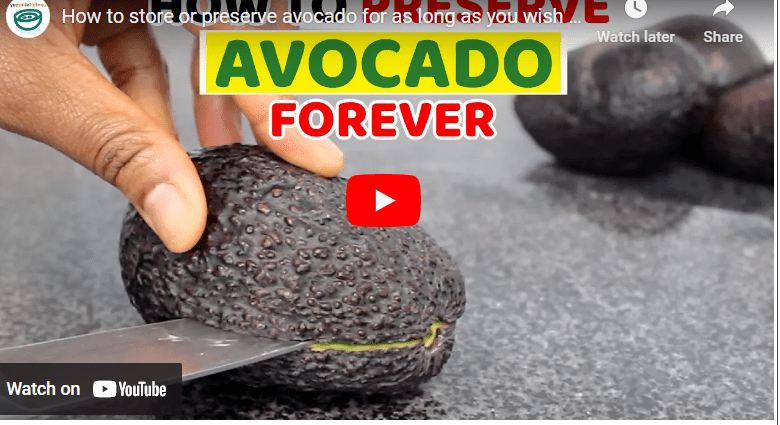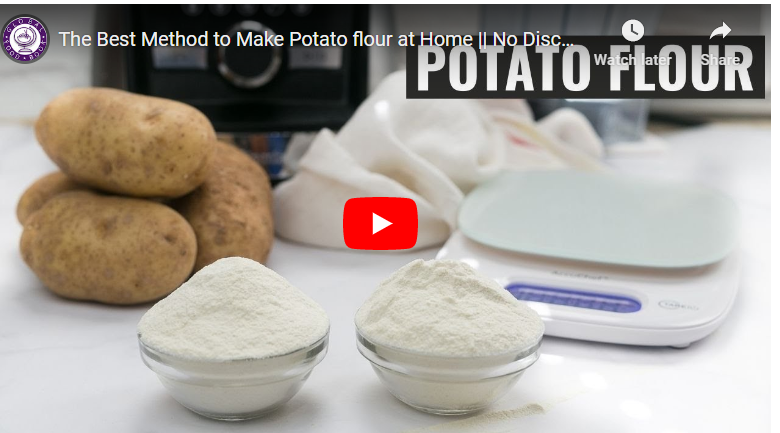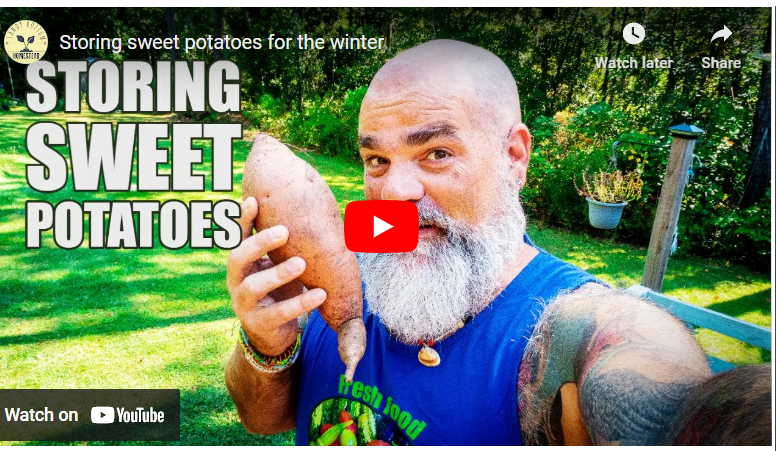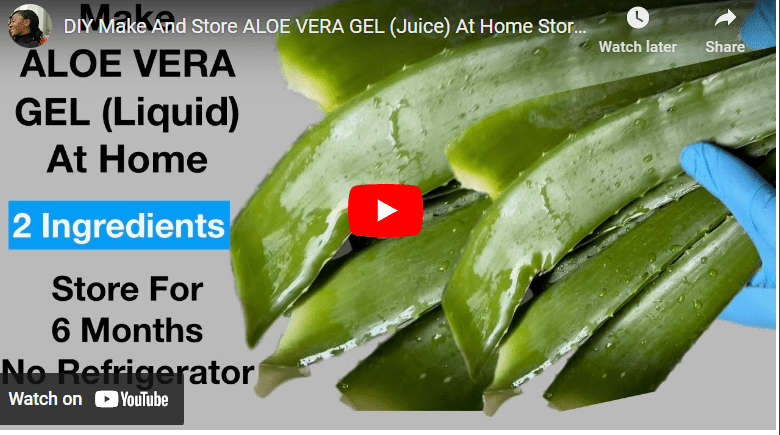When fruits are in season, they are abundant and fresh, but it can be difficult to enjoy them all before they go bad. That’s where fruit preservation comes in. By preserving fruits, you can enjoy them for months or even years after the growing season has ended. In this article, you will learn how to preserve fruits for long-term storage.
Preserving fruit for long time storage involves various methods such as canning, freezing, and drying. Canning fruit involves packing fruit into jars and then processing them in a boiling water bath or a pressure canner. Freezing fruit involves blanching the fruit before freezing it in airtight containers or freezer bags. Drying fruit involves cutting the fruit into slices and either air-drying or using a dehydrator. All these methods can help preserve fruit for up to 1 year.
How To Preserve Fruits For Long-Time Storage
Preserving fruits is all about preventing or slowing down the process of spoilage. Spoilage is caused by various factors, including microorganisms, enzymes, and exposure to air and moisture.
Read Also: How To Preserve Apple for Long-Time Storage
By understanding these factors, you can take steps to prevent spoilage and extend the shelf life of fruits.
The most common preservation techniques work by inhibiting the growth of microorganisms, removing moisture, or both. Canning, for example, works by heating the fruit and sealing it in an airtight container.
Read Also: How To Preserve Aloe Vera For Long-Time Storage
This kills any microorganisms that may be present and creates a vacuum that prevents any new microorganisms from entering.
Drying removes moisture, which prevents microorganisms from growing. Freezing and dehydrating also remove moisture, but in different ways.
Techniques for Preserving Fruits
There are several techniques for preserving fruits, each with its own pros and cons. Here is an overview of the most common techniques:
#1. Canning
Canning is a popular preservation technique that works well for fruits that have a high water content, such as peaches, pears, and apples.
To can fruits, you will need a canner, jars with lids and rings, a jar lifter, and a funnel. Here’s how to can fruits:
Read Also: How To Preserve Avocado For Long Time Storage
Step 1. Prepare The Fruit
Wash the fruit thoroughly and remove any stems, seeds, or pits. Cut the fruit into pieces or leave it whole, depending on your preference.
Step 2. Prepare The Jars
Wash the jars and lids in hot, soapy water and rinse them well. Place the jars in the canner and fill the canner with enough water to cover the jars by about 1 inch. Bring the water to a boil and let the jars simmer for 10 minutes to sterilize them.
Step 3. Fill The Jars
Remove the jars from the canner using the jar lifter. Place a funnel over each jar and fill it with the fruit, leaving about 1/2 inch of space at the top.
Read Also: How To Preserve Beans For Long Time Storage
Step 4. Seal The Jars
Clean off any residue from the rims of the jars by using a clean and damp cloth. Afterward, put the lids onto the jars and fasten the rings securely.
Step 5. Process The Jars
Place the jars back in the canner and make sure they are covered by at least 1 inch of water. Bring the water to a boil and process the jars for the recommended time, depending on the type of fruit and altitude.
Step 6. Store The Jars
Remove the jars from the canner and let them cool on a towel for 24 hours. “Verify that the lids have been properly sealed. Store the jars in a cool, dark place for up to one year.
#2. Drying
Preserving fruits can be achieved through efficient method of drying. It works well for fruits that have a low water content, such as apricots, dates, and figs. Here’s how to dry fruits:
Read Also: How To Preserve Cabbage For Long Storage
Step 1. Prepare The Fruit
Wash the fruit thoroughly and slice it into thin, even pieces.
Step 2. Dry The Fruit
Place the fruit in a single layer on a drying rack or a baking sheet lined with parchment paper. Set the oven to the lowest temperature and leave the door slightly open to allow moisture to escape. Alternatively, you can use a dehydrator, which is specifically designed for drying fruits and other foods.
Step 3. Check The Fruit
Check the fruit regularly to make sure it is drying evenly. Turn the fruit over or move it around if necessary. The drying time will depend on the type of fruit and the method used, but it can take anywhere from a few hours to a few days.
Read Also: How To Preserve Carrot For Long Time Storage
Step 4. Store The Fruit
Once the fruit is completely dry, let it cool and then store it in an airtight container. You can also vacuum-seal the fruit to remove any remaining moisture and extend the shelf life. Dried fruits can be stored for several months at room temperature.
#3. Freezing
Freezing is a convenient way to preserve fruits, and it works well for fruits that are not suitable for canning or drying, such as berries and cherries. Here’s how to freeze fruits:
Step 1. Prepare The Fruit
Wash the fruit thoroughly and remove any stems or pits. Cut the fruit into pieces if desired.
Step 2. Freeze The Fruit
Place the fruit in a single layer on a baking sheet and freeze it for several hours, or until the pieces are frozen solid. Alternatively, you can place the fruit in a freezer-safe container or a resealable plastic bag.
Read Also: How to Preserve Cocoa for Long Time Storage
Step 3. Seal The Container
Make sure the container or bag is sealed tightly to prevent air from getting in. Label the container with the date and type of fruit.
Step 4. Store The Fruit
Place the container in the freezer and store it for up to six months. Frozen fruit can be thawed in the refrigerator or at room temperature.
#4. Dehydrating
Dehydrating is similar to drying, but it removes moisture more slowly and evenly. It works well for fruits that are too moist for drying, such as bananas and pineapples. Here’s how to dehydrate fruits:
Step 1. Prepare The Fruit
Wash the fruit thoroughly and slice it into even pieces.
Read Also: How To Preserve Coconut For Long-Time Storage
Step 2. Dehydrate The Fruit
Place the fruit on a dehydrator tray in a single layer. Set the dehydrator to the recommended temperature for the type of fruit and let it run for several hours, or until the fruit is completely dry.
Step 3. Store The Fruit
Once the fruit is cool, store it in an airtight container or a vacuum-sealed bag. Dehydrated fruits can be stored for several months at room temperature.
#5. Jam And Jelly Making
Jam and jelly making is a popular way to preserve fruits, and it works well for fruits that are too soft for canning or freezing, such as strawberries and raspberries.
Here’s how to make jam or jelly:
Step 1. Prepare The Fruit
Wash the fruit thoroughly and remove any stems or pits. You can choose to cut the fruit into smaller segments if you prefer.
Read Also: How To Preserve Cucumber For Longer Storage
Step 2. Cook The Fruit
Place the fruit in a large pot with sugar and any other ingredients, such as pectin or lemon juice. Cook the fruit over medium heat, stirring occasionally, until it reaches the desired consistency.
Step 3. Can The Jam Or Jelly
Ladle the hot jam or jelly into sterilized jars and seal them with lids and rings. Process the jars in a boiling water bath for the recommended time, depending on the type of fruit and altitude.
Step 4. Store The Jars
Let the jars cool on a towel and check the lids to make sure they are sealed. You can keep the jars for up to one year if you store them in a cool and dark location.
Read Also: How To Preserve Flowers
#6. Pickling
Pickling is a unique way to preserve fruits, and it works well for fruits that have a sour or tart flavor, such as apples and pears. Here’s how to pickle fruits:
Step 1. Prepare The Fruit
Wash the fruit thoroughly and slice it into even pieces.
Step 2. Make The Brine
In a large pot, combine vinegar, water, sugar, and any other spices or seasonings you like, such as cinnamon or cloves. Heat the mixture until it boils, and then lower the temperature.
Step 3. Add The Fruit
Add the sliced fruit to the brine and simmer it for a few minutes, or until the fruit is slightly softened.
Read Also: How To Preserve Fresh Pepper For Long-Time Storage
Step 4. Can The Fruit
Using a slotted spoon, transfer the fruit to sterilized jars. Ladle the hot brine over the fruit, leaving a 1/4-inch headspace. Seal the jars with lids and rings.
Step 5. Process the jars
Process the jars in a boiling water bath for the recommended time, depending on the type of fruit and altitude.
Step 6. Store the jars
Let the jars cool on a towel and check the lids to make sure they are sealed. It’s recommended to store the jars in a cool and dark spot if you want them to last for up to one year.
Read Also: How to Preserve Tomatoes for Long Time Storage
#7. Fermenting
Fermenting is another unique way to preserve fruits, and it works well for fruits that have high sugar content, such as grapes and plums. Here’s how to ferment fruits:
Step 1. Prepare The Fruit
Wash the fruit thoroughly and remove any stems or pits. The fruit should be cut into desired pieces.
Step 2. Make The Brine
In a large pot, combine water, salt, and any other seasonings you like, such as garlic or ginger.
Step 3. Add The Fruit
Add the fruit to the brine and let it sit for a few days, stirring occasionally, until it starts to ferment.
Step 4. Store The Fruit
Once the fruit is fermented to your liking, transfer it to sterilized jars and store it in the refrigerator. Fermented fruits can be stored for several months.
Benefits of Preserving Fruits
Preserving fruits has numerous benefits, including:
- Long-Term Storage: Preserving fruits extends their shelf life, making it possible to enjoy them even when they are out of season.
- Nutritional Value: Fruits are a great source of essential nutrients, such as vitamins, fiber, and antioxidants. By preserving fruits, you can ensure that you have a ready supply of these nutrients all year round.
- Cost Savings: Buying fruits in bulk when they are in season and preserving them can save you money in the long run. You can also save money by making your own jams, jellies, and other fruit preserves.
- Sustainability: By preserving fruits, you can reduce food waste and help to promote sustainability.
Challenges of Preserving Fruits
While preserving fruits has numerous benefits, it also comes with some challenges. Some of these challenges include:
- Spoilage: Fruits can spoil quickly if not preserved properly, leading to food waste and potential health risks.
- Quality Loss: The quality of preserved fruits can be affected by factors such as over-processing, under-processing, and poor storage conditions.
- Time-Consuming: Some fruit preservation methods, such as canning and pickling, can be time-consuming and require a significant amount of preparation.
Factors that affect Fruit Preservation
- Fruit type: Different types of fruits have different textures, sugar content, and acidity levels that affect their preservation.
- Ripeness: Fruits that are overripe or underripe may not preserve well due to their texture and sugar content.
- Storage conditions: The temperature and humidity of the storage environment can affect the shelf life of the preserved fruit.
- Preparation method: The method used to preserve the fruit can also affect its shelf life and quality.
Best Practices for Fruit Preservation
- Use fresh, high-quality fruit: High-quality fruit will result in better tasting and longer-lasting preserves.
- Follow recipes and guidelines carefully: Recipes and guidelines for preserving fruits have been tested to ensure safe and effective preservation. Follow them carefully to avoid spoilage and ensure quality.
- Sterilize jars and equipment: Properly sterilizing jars and equipment before use helps to prevent contamination and spoilage.
- Store preserves properly: Properly stored preserves will last longer and maintain their quality. Keep the product in a cool and dry location, and avoid exposing it to direct sunlight.
- Label and date jars: Labeling and dating jars helps to keep track of the contents and their freshness.
Containers To Keep Fruit Fresh Longer
- Glass or plastic containers with airtight lids are ideal for storing sliced or chopped fruits. These containers help to keep air and moisture out, which can cause the fruit to spoil.
- Reusable silicone bags or beeswax wraps can also be used to store fruits. These eco-friendly options are a great alternative to plastic bags and cling wraps.
- Produce storage containers with vents and adjustable humidity settings can help to regulate the airflow and humidity, extending the life of the fruit.
What Are The Tips In Storing Fruits To Keep Them In Good Condition
#1. Store Fruits Separately
Fruits that give off ethylene gas, such as apples and bananas, should be stored separately from other fruits to prevent them from ripening too quickly.
#2. Don’t Wash Fruits Until You’re Ready To Eat Them
Washing fruits can cause moisture buildup, which can speed up the ripening process and cause them to spoil faster.
#3. Store Fruits At The Right Temperature
Different types of fruits have different temperature requirements. For example, tropical fruits like mangoes and pineapples should be stored at room temperature, while berries and grapes should be stored in the refrigerator.
Best Way To Store Fruit On Counter
- Keep fruits in a cool, dry place away from direct sunlight.
- Use a fruit basket or bowl with plenty of ventilation to allow air to circulate around the fruit.
- If storing cut fruits on the counter, place them in an airtight container or wrap them in beeswax wraps to prevent them from drying out.
How Long Does Fruit Last At Room Temperature
- The shelf life of fruits at room temperature depends on the type of fruit and its ripeness. Here are some general guidelines:
- Apples, pears, and citrus fruits can last up to a week.
- Bananas and avocados can last up to 5 days.
- Berries and grapes should be refrigerated and can last up to 3-5 days.
- Melons and tropical fruits like mangoes and pineapples should be stored at room temperature and can last up to a week.
Conclusion
Preserving fruits is a great way to enjoy your favorite fruits all year round. Whether you choose canning, drying, freezing, jam and jelly making, pickling, or fermenting, there are many ways to preserve fruits to suit your taste and needs. By following these simple steps, you can ensure that your fruits are preserved safely and efficiently for long-term storage.



